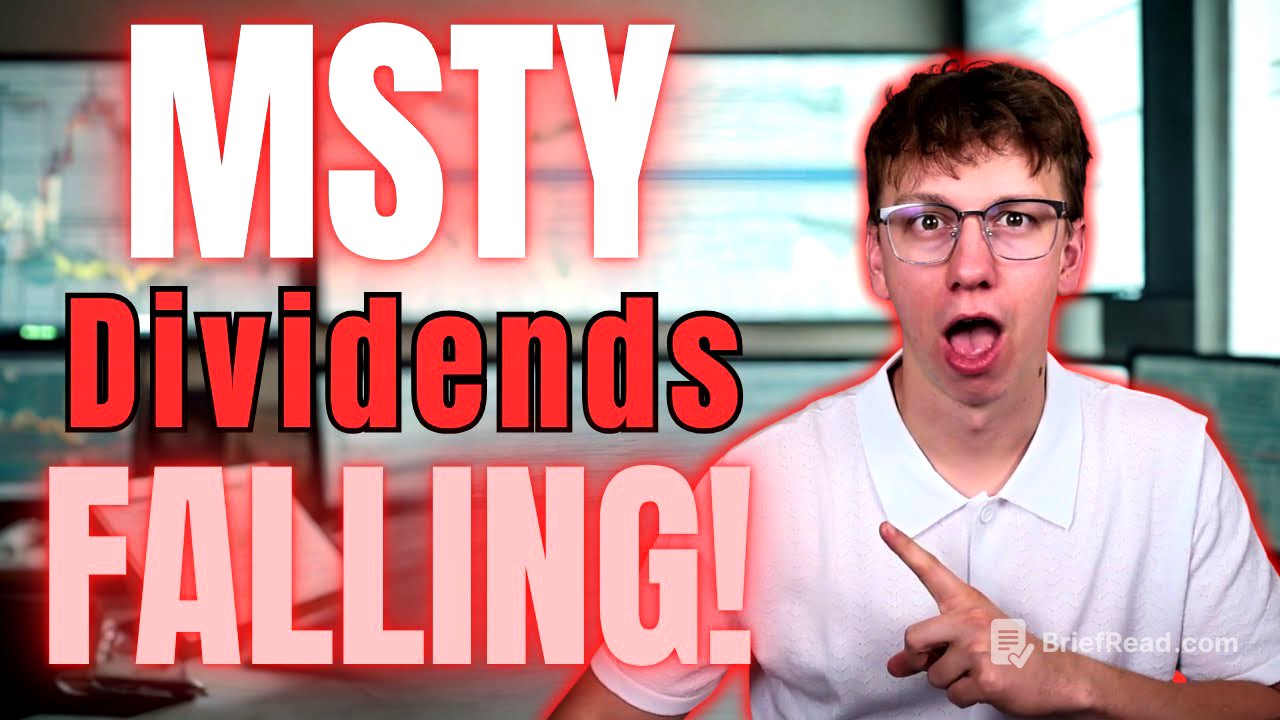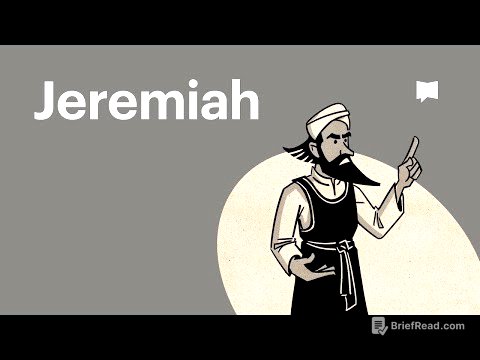TLDR;
This video discusses the potential decline of MSTY (MSTR Option Income Strategy ETF) in 2025, citing factors such as insider selling, lower implied volatility, and decreasing distributions. It compares MSTY's performance against its earlier high returns and introduces two YieldMax ETFs, PLTY (Palantir Option Income Strategy ETF) and HOI (Robinhood Option Income Strategy ETF), as potential outperformers. The video emphasizes the importance of adapting investment strategies and not solely relying on one ETF.
- MSTY's distributions are falling due to lower implied volatility.
- Insider selling of MSTR shares raises concerns.
- PLTY and HOI are presented as potential alternatives for higher returns in 2025.
Intro [0:00]
The video starts by questioning whether 2025 will mark the end of MSTY's high performance, pointing to insider selling, reduced implied volatilities, and smaller distributions. The presenter teases the introduction of two YieldMax ETFs that could potentially outperform MSTY in 2025, despite MSTY's strong performance over the last six months. The presenter encourages viewers interested in YieldMax ETFs and passive income to like and subscribe to the channel.
MSTY Overview [1:00]
The presenter discusses MSTY, the MSTR option income strategy ETF, highlighting its high distribution rate of over 90%, which is difficult to maintain without NAV erosion. While MSTY has performed well since its inception, partly due to MSTR's trading history, the presenter aims to explore whether new funds from YieldMax might outperform MSTY in 2025. The presenter clarifies that this is not a hate video towards MSTY, which he still holds, but rather a realistic look at adapting to changing market conditions and focusing on profit-making across different ETFs.
MSTY Dividend History [2:27]
The presenter notes that falling distributions are a key factor pushing people away from MSTY. Since its first distribution in April 2024, payouts have varied widely, from $4.42 to $1.34 per share. The presenter expresses concern over the predicted dividend for July, estimated to be around $1.20, which would be the lowest ever. The presenter asks viewers to share their thoughts on tracking ETFs and whether lower distributions would prompt them to sell MSTY.
Implied Volatility Chart [4:58]
The presenter uses Market Chameleon to analyze MSTR's implied volatility, which is a key factor in the falling distributions. The implied volatility, represented by the IV30 green line, was extremely high in November 2024 when MSTR was skyrocketing. Since then, it has consistently dropped, falling below 50 from a score over 100. The presenter explains that MSTR's performance and implied volatility are linked to Bitcoin's movements, which in turn affect MSTY's distributions. The presenter suggests that as MSTR grows, its implied volatility may continue to decrease due to the larger market cap.
Insider Selling of MSTR [7:49]
The presenter uses Quiver Quantitative to track insider trading activity in MSTR. While noting that some insider buying occurred, particularly a purchase of 5,000 shares by Jared M. Patton on June 5th, the presenter highlights significant insider selling. Data from NASDAQ.com reveals substantial selling over the last three months (116,000 shares sold) and the last 12 months (505,000 shares sold). The presenter acknowledges that insider selling could be due to various reasons, such as portfolio reallocation or diversification, but also suggests it could be a response to shrinking distributions and lower implied volatility.
Drip Calculator Total Returns MSTY [12:18]
The presenter uses a DRIP calculator to demonstrate MSTY's historical performance. A $10,000 investment on February 22, 2024, with dividend reinvestment, would now be worth almost $39,000, a 287% increase. Even without DRIP, the investment would be worth $28,000. The presenter believes MSTY is unlikely to see another record-breaking run, but the DRIP strategy was effective due to buying more shares at cheap prices during a flat period before the price surged.
YieldMax ETFs that I Think Could Outperform MSTY in 2025 [13:26]
The presenter introduces two YieldMax ETFs that he believes could outperform MSTY in 2025: PLTY (Palantir Option Income Strategy ETF) and HOI (Robinhood Option Income Strategy ETF). PLTY is favored due to Palantir hitting new all-time highs and high implied volatility. PLTY is more expensive than MSTY, trading in the 60s compared to MSTY in the low 20s, but has shown strong payouts. HOI is a new ETF based on Robinhood's stock, which has also been performing well, potentially leading to higher implied volatility. The presenter asks viewers to share their preferences among PLTY, HOI, and MSTY.








![So You Want to Be an ANESTHESIOLOGIST [Ep. 12]](https://wm-img.halpindev.com/p-briefread_c-10_b-10/urlb/aHR0cDovL2ltZy55b3V0dWJlLmNvbS92aS96OGgxbVJxSTNfSS9ocWRlZmF1bHQuanBn.jpg)
